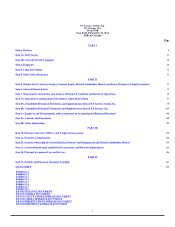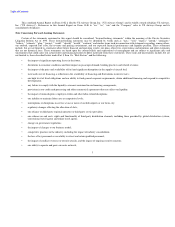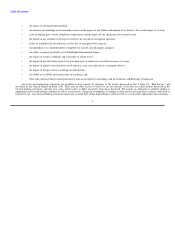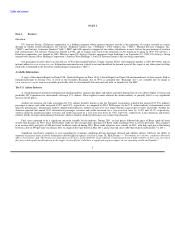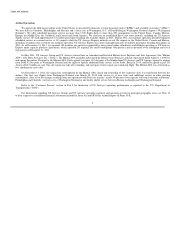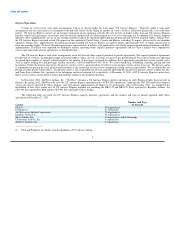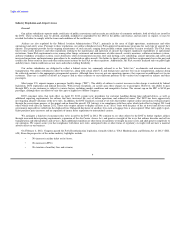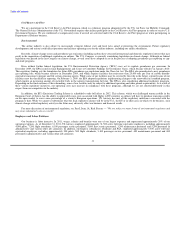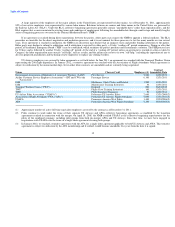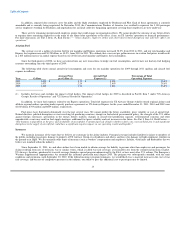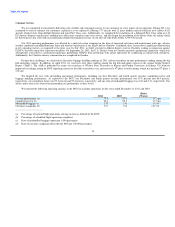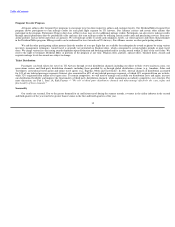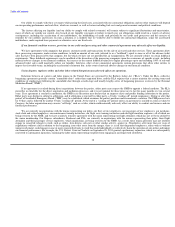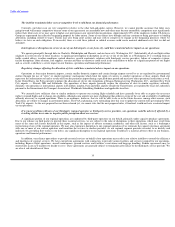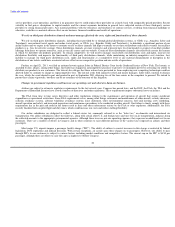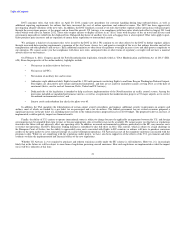US Airways 2011 Annual Report Download - page 14
Download and view the complete annual report
Please find page 14 of the 2011 US Airways annual report below. You can navigate through the pages in the report by either clicking on the pages listed below, or by using the keyword search tool below to find specific information within the annual report.
Table of Contents
Civil Reserve Air Fleet
We are a participant in the Civil Reserve Air Fleet program, which is a voluntary program administered by the U.S. Air Force Air Mobility Command.
The General Services Administration of the U.S. Government requires that airlines participate in the Civil Reserve Air Fleet program in order to receive U.S.
Government business. We are reimbursed at compensatory rates if aircraft are activated under the Civil Reserve Air Fleet program or when participating in
Department of Defense business.
Environmental
The airline industry is also subject to increasingly stringent federal, state and local laws aimed at protecting the environment. Future regulatory
developments and actions could affect operations and increase operating costs for the airline industry, including our airline subsidiaries.
Recently, climate change issues and greenhouse gas emissions (including carbon) have attracted international and domestic regulatory interest that may
result in the imposition of additional regulation on airlines. The U.S. Congress is currently considering legislation on climate change. Although no federal
legislation was passed in the last Congress on climate change, several states have adopted or are in the process of adopting greenhouse gas reporting or cap-
and-trade programs.
Even without further federal legislation, the U.S. Environmental Protection Agency ("EPA") may act to regulate greenhouse gas emissions. In
December 2009, the EPA issued its final Endangerment and Cause or Contribute Findings for Greenhouse Gases, which became effective in January 2010.
This regulatory finding sets the foundation for future EPA greenhouse gas regulation under the Clean Air Act. The EPA also promulgated a new greenhouse
gas reporting rule, which became effective in December 2009, and which requires facilities that emit more than 25,000 tons per year of carbon dioxide-
equivalent emissions to prepare and file certain emission reports. While some of our facilities may be covered by this rule in the future, currently none of our
facilities meet the threshold for reporting. On February 3, 2009, the EPA adopted regulations implementing changes to the renewable fuel standard program,
which require an increasing amount of renewable fuels in the nation's transportation fuel mix. The EPA is also considering additional regulatory programs.
Depending on the final outcome of this rulemaking, some of our facilities may be subject to additional operating and other permit requirements. As a result of
these various regulatory initiatives, our operating costs may increase in compliance with these programs, although we are not situated differently in this
respect from our competitors in the industry.
In addition, the EU's Emissions Trading Scheme is scheduled to take full effect in 2012. This scheme, which was challenged unsuccessfully in the
European Court of Justice, has the ability to appreciably raise costs associated with flights to EU countries as airlines will have to purchase emissions credits
on the open market to cover some percentage of a carrier's European operations. US Airways has met all the regulatory milestones associated with the
program to date. While we cannot yet determine what the final regulatory scheme will be in the U.S., the EU or in other areas in which we do business, such
climate change-related regulatory activity in the future may adversely affect our business and financial results.
For more discussion of environmental regulation, see Part I, Item 1A, Risk Factors — "We are subject to many forms of environmental regulation and
may incur substantial costs as a result."
Employees and Labor Relations
Our business is labor intensive. In 2011, wages, salaries and benefits were one of our largest expenses and represented approximately 20% of our
operating expenses. As of December 31, 2011, US Airways employed approximately 31,500 active full-time equivalent employees, including approximately
4,000 pilots, 7,200 flight attendants, 6,100 passenger service personnel, 5,800 fleet service personnel, 3,200 maintenance personnel and 5,200 personnel in
administrative and various other job categories. In addition, our Express subsidiaries, Piedmont and PSA, employed approximately 5,300 active full-time
equivalent employees, including approximately 900 pilots, 500 flight attendants, 3,100 passenger service personnel, 400 maintenance personnel and 400
personnel in administrative and various other job categories.
11


